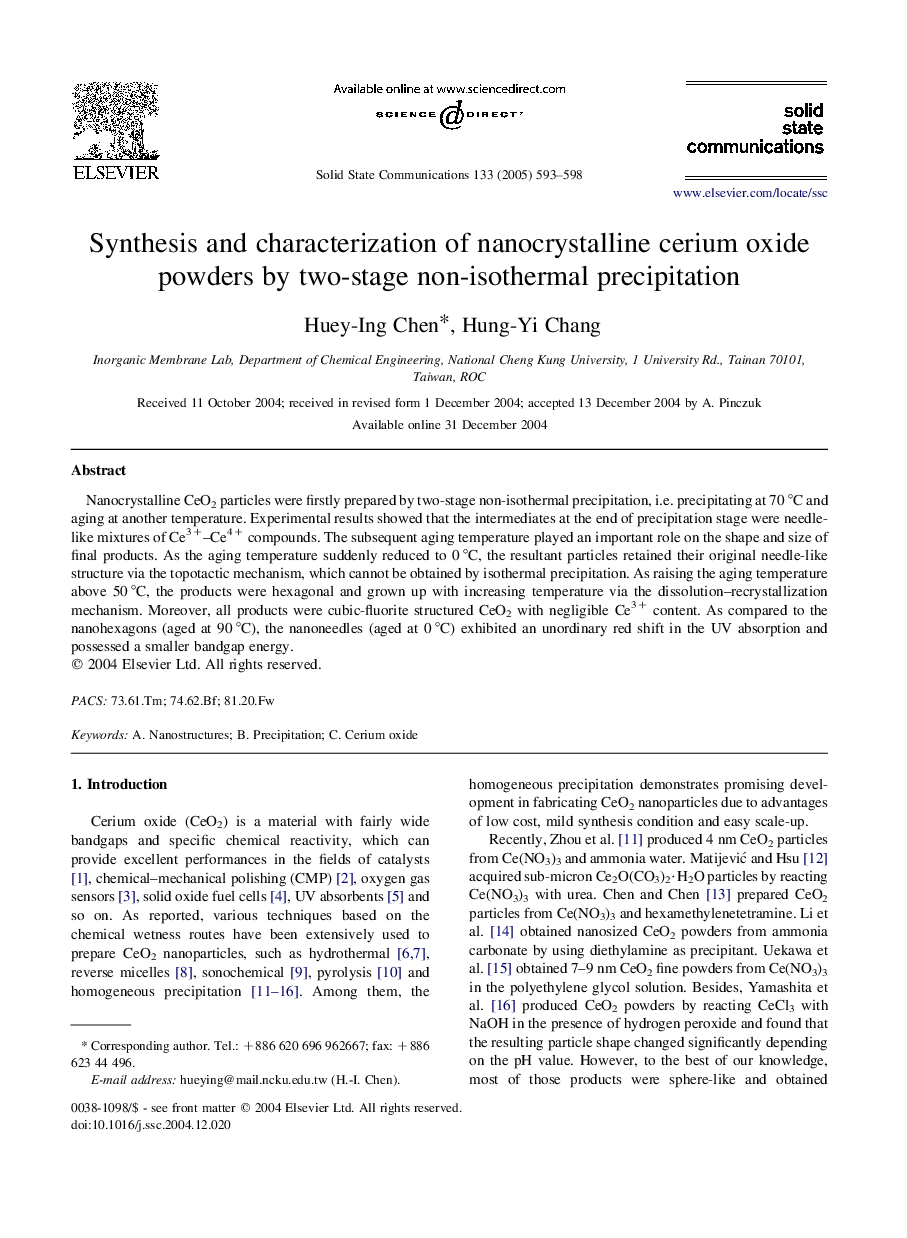| Article ID | Journal | Published Year | Pages | File Type |
|---|---|---|---|---|
| 10653637 | Solid State Communications | 2005 | 6 Pages |
Abstract
Nanocrystalline CeO2 particles were firstly prepared by two-stage non-isothermal precipitation, i.e. precipitating at 70 °C and aging at another temperature. Experimental results showed that the intermediates at the end of precipitation stage were needle-like mixtures of Ce3+-Ce4+ compounds. The subsequent aging temperature played an important role on the shape and size of final products. As the aging temperature suddenly reduced to 0 °C, the resultant particles retained their original needle-like structure via the topotactic mechanism, which cannot be obtained by isothermal precipitation. As raising the aging temperature above 50 °C, the products were hexagonal and grown up with increasing temperature via the dissolution-recrystallization mechanism. Moreover, all products were cubic-fluorite structured CeO2 with negligible Ce3+ content. As compared to the nanohexagons (aged at 90 °C), the nanoneedles (aged at 0 °C) exhibited an unordinary red shift in the UV absorption and possessed a smaller bandgap energy.
Related Topics
Physical Sciences and Engineering
Materials Science
Materials Science (General)
Authors
Huey-Ing Chen, Hung-Yi Chang,
